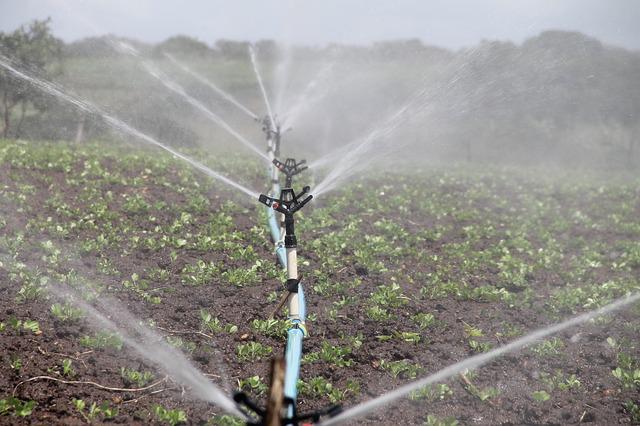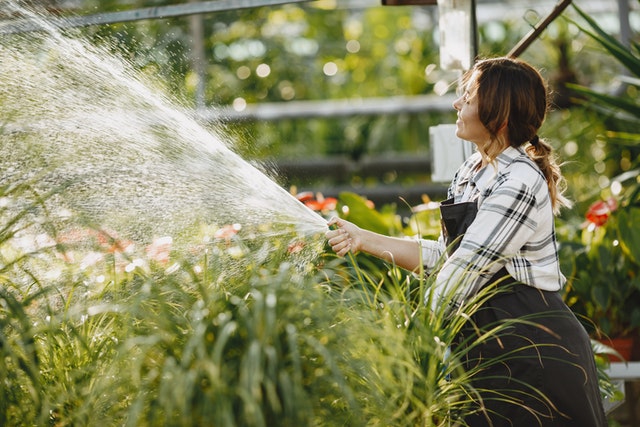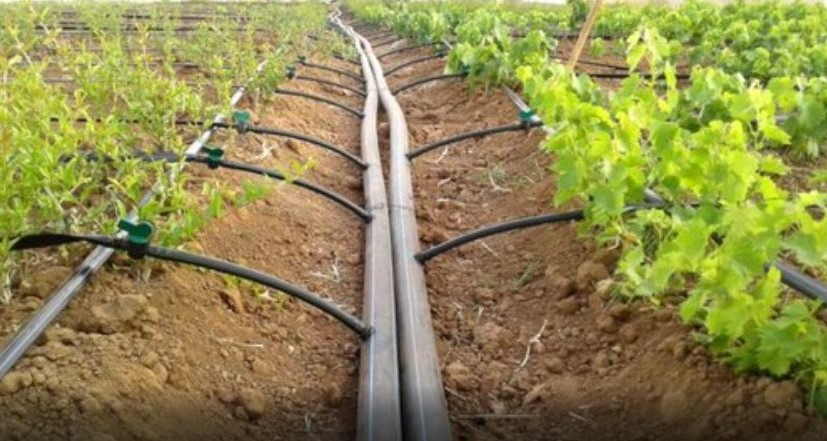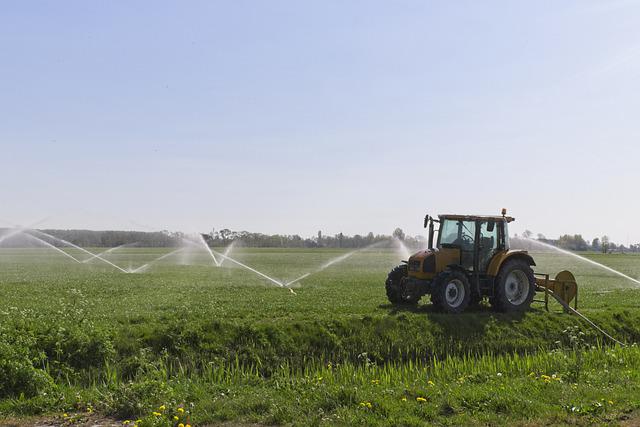On this page, you’ll find an Overview Of Irrigation Techniques and how irrigation fits into the agricultural landscape. Irrigation is the agricultural method of using regulated amounts of water to help in the production of crops, as well as to grow landscape plants, which may be known as watering. Through the irrigation system, nutrients may be supplied to the crops. This process allows moisture directed for growth and development, germination, and other related processes.
Agriculture does not use irrigation but rather depends only on natural rainfall which is directed to rain-fed. Farmers are compelled to get innovative when rain doesn’t come regularly and grow water-hungry crops. Irrigation uses groundwater and surface water, to provide water directly to farms to moisten dehydrated plants.
Wind and evapotranspiration make problems for farmers when they avoid waste and try to get water to plants. In many regions of the country, a drop-off supply and available entrance to water are also efforts for farmers.
There are many methods to irrigate. What did I say about irrigation meaning? Irrigation system means the required accessories to water well to obtain irrigation water to an approved irrigated area.
Also, read about Agriculture Drones.

What Is An Irrigation System?
An irrigation system is a way of providing water to an area where it is required but not usually attending to the demanded quantities. This process is generally used for landscaping and agriculture purposes.
Irrigation is one of the most essential and reasonable specialties in humanity. There are a lot of methods for irrigation. So, the primary significance of this is to provide water to the plant virtually and efficiently.
Everything on the earth is dependent on many things. And one of those things retains the plant. Plant breathes by providing oxygen and bringing in carbon dioxide. Therefore, we all know that the oxygen discharges are inbreathe by all living organisms such as humans, animals, and anything that relies on water.
However, the significance of the irrigation method is defined by numerous aspects such as the type of providing system and the requirements at its time of use. We require an irrigation system for agriculture as the rain is conditional on the season such as in the moderate area.

Types:
There are various kinds of irrigation practiced to improve crop products. These types of irrigation systems are practiced and founded on the various types of crops, climates, soil, and resources. Therefore, the major types of irrigation observed by farmers include:
1. Surface Irrigation
Surface irrigation is a type of irrigation system which refers to delivering water across the land by gravity-fed. There is no irrigation pump is applied to the surface irrigation system. . Here, water is broadcasted across the land by gravity.
2. Localized Irrigation
A localized irrigation system provides water directly where the plants are producing hence minimizing water loss through evaporation from the soil. This system applies water through a network of pipes under low-pressure resulting in moistening only a small portion of the soil surface.
3. Sprinkler Irrigation
The sprinkler method is used for applying water in a controlled way in that it required similar rainfall. Water is broadcasted from a central location that may consist of pipes, pumps, valves, and sprinklers. Therefore, a sprinkler irrigation system can use for agricultural, industrial, and residential usage.
4. Drip Irrigation
Drip irrigation is a variety of micro-irrigation systems. The system has the possibility to keep nutrients and water by authorizing water to drop slowly to the root of plants. In this type, water drops are provided near the roots of the plants. This type of irrigation requires more maintenance that’s why it is infrequently used in agriculture.
5. Centre Pivot Irrigation
The Centre Pivot system guides the use of a mechanized irrigation system. It can help to irrigate crops by managing a circular design near a prominent pivot. In this system, the water is broadcasted by a sprinkler system proceeding in a circular way.
6. Sub Irrigation
Sub-irrigation system also known as zero runoff preserves water and fertilizers. This method is being installed by greenhouse farmers to acquire more constant growth, improve product quality, and improve production efficiency. In this method, water is spread through a system such as pumping station gates, ditches, and canals by lifting the water table.
7. Manual Irrigation
Manual irrigation refers to moving water from the plant to plant. This is a time-consuming and labor-intensive system of irrigation. In this system, manual labor circulated the water through the watering cans.

Methods:
Two different methods can carry out irrigation.
- Traditional Methods
- Modern Methods
We are discussing these two methods for your understanding.
1. Traditional Methods of Irrigation
In the traditional method, Irrigation is done by hand-operated. Here, a farmer draws out water from wells or channels and takes it to the farming areas by using cattle. This method can change in different territories.
The main advantage of the traditional irrigation method is that it is inexpensive. But its efficiency is poor because of the lopsided allocation of water. Also, the possibilities of water defeat are extremely high in this method.
Some examples of the traditional system are the pulley system, lever system, and chain pump. Among these, the pump system is the most common and used widely. However, there are four types of traditional irrigation methods, which are as follows–
Check basin method:
This type of irrigation method relies upon water availability. In this method, the cultivating land is divided into various sectors. The lands are connected with a small drain. Here, water is kept at the most elevated place on the land.
Strip irrigation method:
This method needs the lowest labor and assets. In this method, the farming land is divided into various strips which are separated by med. So, the measurement per strip depends on the land’s end of the slope to an area of supply.
Basin irrigation:
This traditional irrigation system is not used for growing crops. Normally a raised stand is constructed of mud or cement incredibly near the plants. Channels are dug with the goal can get water.
Furrow irrigation:
The Furrow irrigation method is confirmed to be a useful traditional method whenever crops are filled in columns. This type can produce more pleasing irrigation of a bigger portion of farmland.

2. Modern Methods of Irrigation
The modern method equalizes the drawbacks of traditional methods. Therefore, this system helps in the appropriate way of water usage.
The modern method concerns two systems—
- Sprinkler system
- Drip system
Sprinkler System:
The sprinkler method is used for applying water in a controlled way in that it required similar rainfall. Water is broadcasted from a central location that may consist of pipes, pumps, valves, and sprinklers.
Here a pump is attached to pipes which induces force and water is sprinkled through the pipes. Therefore, a sprinkler irrigation system can be used for agricultural, industrial, and residential usage.
Drip System:
Drip irrigation is a type of micro-irrigation system. The system has the possibility to keep nutrients and water by letting water drip gradually to the root of plants. So, in this type, water drops are provided near the roots of the plants.
In the drip system, water supply is done dip by dip precisely at roots using a stocking or pipe. This method can also be used in those areas where water accessibility is more inflexible.
So, this type of irrigation requires more maintenance that’s why it is infrequently used in agriculture.

Importance:
The main importance of irrigation supplies is concerned below.
1. Agriculture is frequently quite inhibited due to irregular, sketchy, or uncertain rain. Appropriate irrigation systems can assure sustained agriculture.
2. The fecundity of irrigated farmland is more useful than that of unirrigated land. Crop yields are higher in drenched territories in balancing with rainfed areas.
3. Seeds cannot develop in arid soil as wetness is required for the fertilization of seeds. The required moisture range of soil for the evolution of seed can be provided with the help of an irrigation supply.
4. It is possible to crop multiple crops in a year with the help of irrigation. This will improve products and product quality. With an irrigation facility, there two or three crops are cultivated in many areas of India.
5. It is possible to deliver the needed amount of oxygen and hydrogen through the irrigation system. So, this process is important for the proper development of plant roots.
6. A plant can retain mineral nutrients from the rinsed soil. Therefore, the irrigation process is important for the overall development of plants.
7. Through the irrigation process, farmers can obtain more space. Incomplete rain may also generate deficiency & starvations. Irrigation can recreate a defensive function during courses of deficiency & starvation.
8. Irrigation presents financial development and destitution decrease. There a significant growth in revenue is gained in the country as revenue and occupation are closely connected to the outcome and irrigation improves production.
9. People expecting to purchase Jain irrigation systems limited for its premium will need to make their activity soon. However, the stock is about to trade ex-dividend and this means that investors who purchase Jain irrigation shares on or after the 12th of September will not receive the dividend which will be paid on the 30th of October.
Founded on the last year’s value of charges, the Jain Irrigation system store has a streaming yield of around 5.2% on the current Jain irrigation share price of ₹ 19.05.

Conclusion:
It is widely identified that irrigation has a powerful force in foresting development. This technique will assure your plants are moistened perfectly during the optional periods. There hasn’t been any chance to worry about whether you’ve moisturized too little or too much either, or if you moisturized too greatly too fast, the losing water due to runoff.
So, this is complete information about what is irrigation, what irrigation meaning, the irrigation system, and the types and methods of agricultural water use. Hope you got all the answers after reading this article and hope this will be helpful to you.
